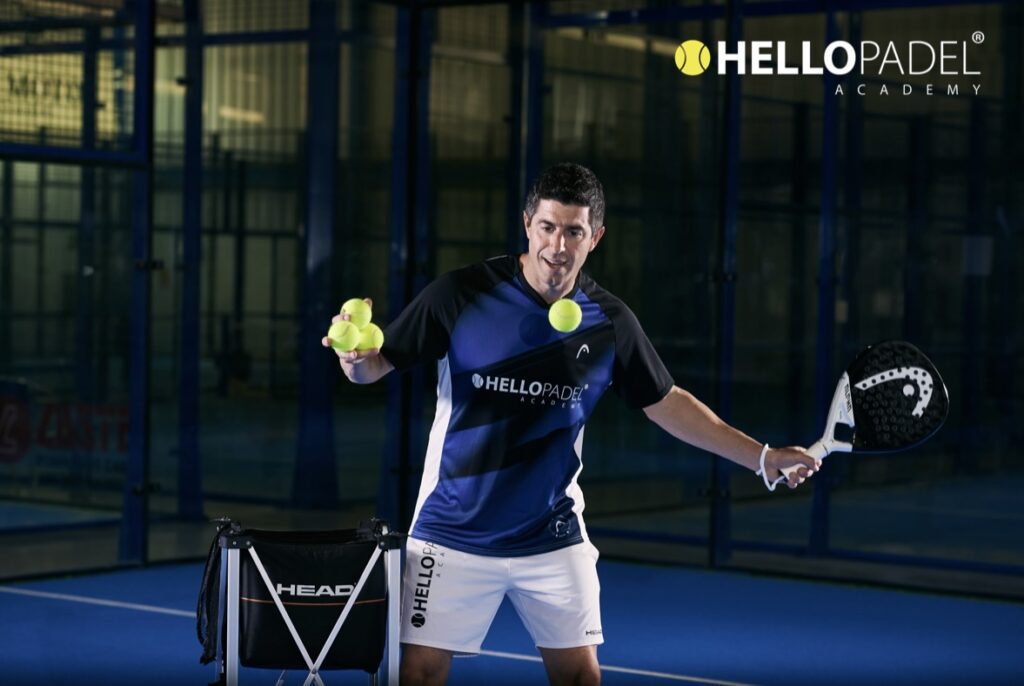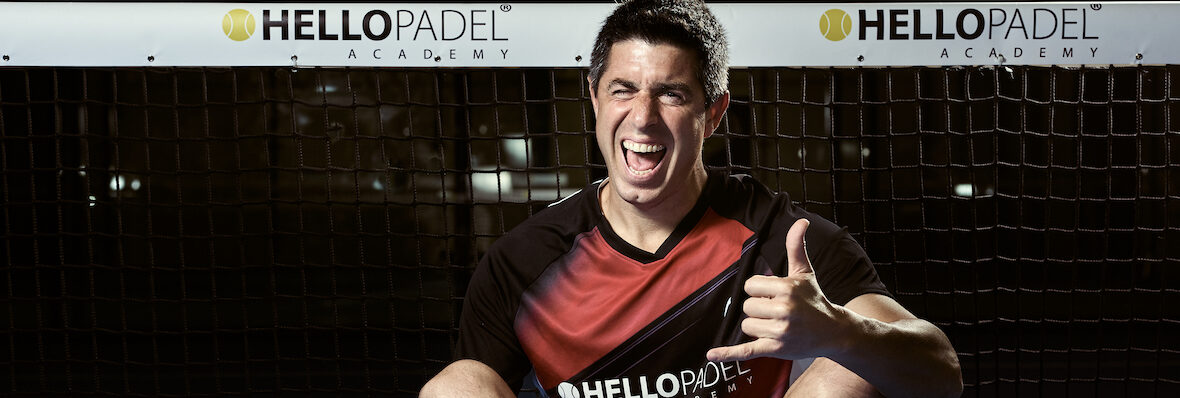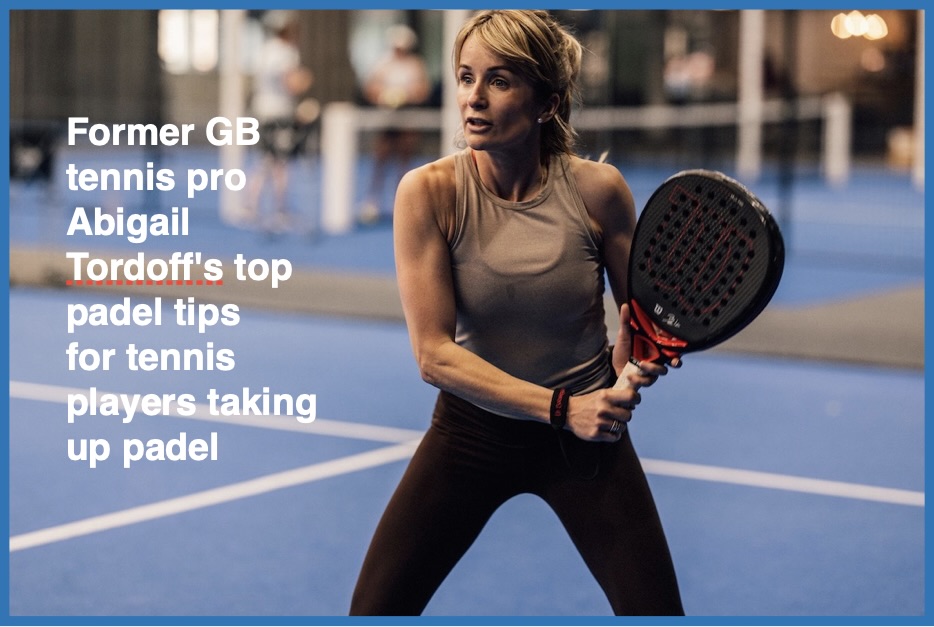Andrini’s 15 step guide to shift from tennis to padel
Padel tips for tennis players
Former world padel champion Mauri Andrini, of Hello Padel Academy, gives his top tips for making the transition from tennis to padel.
1: Forget power shots
A goal when we play padel is to make the opponent hit the ball from below net height, and us always above. Therefore using strong strokes in padel will make the ball bounce and remain high, giving an opponent the opportunity to counter attack. It is more effective to make a slower or softer shot, looking for the ball to die off a wall and not bounce, making the counter shot much more difficult for rivals.
2: Forget topspin shots
Topspin makes the ball rise, both when it bounces on the ground and when it bounces off the wall, leaving an easier ball for the opponent. It is better to use flat or slice shots to try to get the ball to rise up as little as possible. Perhaps the only exceptions to using top spin would be when we seek to make a touch shot, return to the feet or when hitting the ball with the aim to bring it back to our side of the court or take it out of court.
3: Be patient
In tennis, especially if you are serving, it is likely that you can win the point relatively quickly by serving well. In padel it is very unusual to win a point with just a few strokes, especially as the level of the players increases. That’s why we have to play more patiently because finishing a point is more difficult. Tennis players have to change the psychological/tactical mind set of being aggressive and playing with powerful strokes to the mindset of being patient and working on the point until they get a ball to finish it.

4: Make fewer definitive smashes
It is very common to see tennis players try to hit strong smashes to finish points. In padel (leaving aside professional players) we rarely manage to finish the point with a smash and should not try to win every ball that is hit to us from above. Often it is better to hit a less powerful and well-placed smash with a good spin (or a bandeja/vibora) than a very powerful and flat smash, as the opponent can intercept this more easily.
5: Learn the bandeja & the víbora
This links to the previous point. In padel, when we are faced with a lob or a high ball, in the majority of cases it will be more effective to hit a bandeja or a víbora than a winning smash. Therefore, learning how to do, above all, the bandeja, should be a priority for players who come from tennis.
6: Use the walls
It is typical to see that tennis players who have only recently started playing padel don’t use the walls. From the back of the court they will play without letting balls bounce off the glass. They will even volley from the back rather than let the ball bounce off the glass. In padel this is a mistake. The walls are not our enemies but we have to know how to make them work in our favour and not against us.
7: Hit more lobs
In tennis you rarely use the lob when your opponent goes up to the net. Most of the time you opt for a passing shot as the tennis court is big and the player can’t cover the whole court. In padel the court is smaller, there are walls that make the balls bounce back into play and we always play doubles, so getting a passing shot is almost impossible. That’s why we hit a lot of lobs, with the aim of sending our opponents to the back and gaining the net, which is where we win points and matches.
8: Switch between attack & defence
In tennis when one of the players takes the initiative they keep it until they win the point, force the opponent to make a mistake or make an error themselves. Rarely is there a change of role within the same point. In padel it is very typical to see both partners switch from attacking to defending several times within the same point.
9: Play the middle
In tennis you try to play to the sides and open up angles to make your opponent run and force errors. Padel is not like that. As there are walls the ball will always bounce and return into court. It can be more effective to hit the ball to the centre, moving both players to the middle and generating gaps on the sides and at the same time there is a chance (in less experienced pairings) that the opponents are not sure whose ball it is.
10: Get to the net
Many tennis points are won from the baseline. In padel it is more difficult to win a point from the baseline. That’s why, as soon as you have the chance, you should go to the net, which is where you win most points and matches.
11: Slice volleys
Padel players rarely win a point with a power volley. Most of the time we will have to play a volley that is not very powerful with a short spin, looking for it to barely bounce and rise from the glass to make it as difficult as possible for our opponent to return.
12: More forward & backward movements
In tennis the vast majority of movements are lateral. In padel there are lateral movements but also many forward and backward moves because of rebounds on the back wall and because one of the objectives is to win the net whenever possible.
13: Move as a couple
In padel it is very important that the couple moves in unison, for example up to the net, moving to the back court and when moving to the corresponding side when at the net.
14: Shorter racket preparations and follow through
Make shorter stroke preparations than in tennis. The court is smaller and hitting hard will often work against us. Also, by doing a short preparation we are ready earlier. It will give us much more ball control and help to hit the ball in front of the body.
15: Serve slower
In tennis the vast majority of first serves are about power. In padel you have to serve from the maximum height of the waist and serving faster will give less control of the direction of the ball, more chances to miss and less time to get to the net. We benefit more from a low serve with a slice spin (so the ball is not lifted) and a medium speed, giving us a chance to be near the net before the opponent returns. Even if we manage to hit a very fast and well-placed serve, the opponent will almost certainly be able to return it as he can always let the ball pass and wait for it to bounce off the glass. If you need convincing of this look at professional padel to see how many points you see won with the serve or if the pros always serve strongly. 🎾







